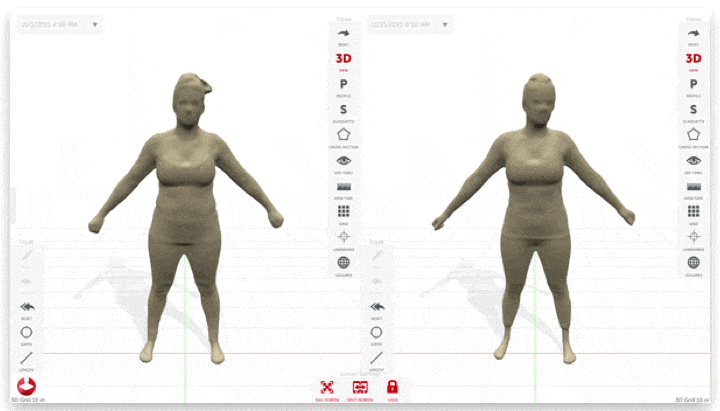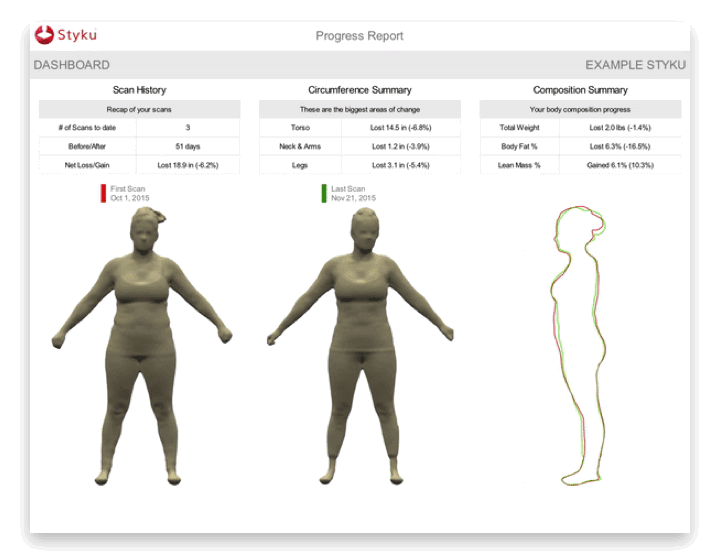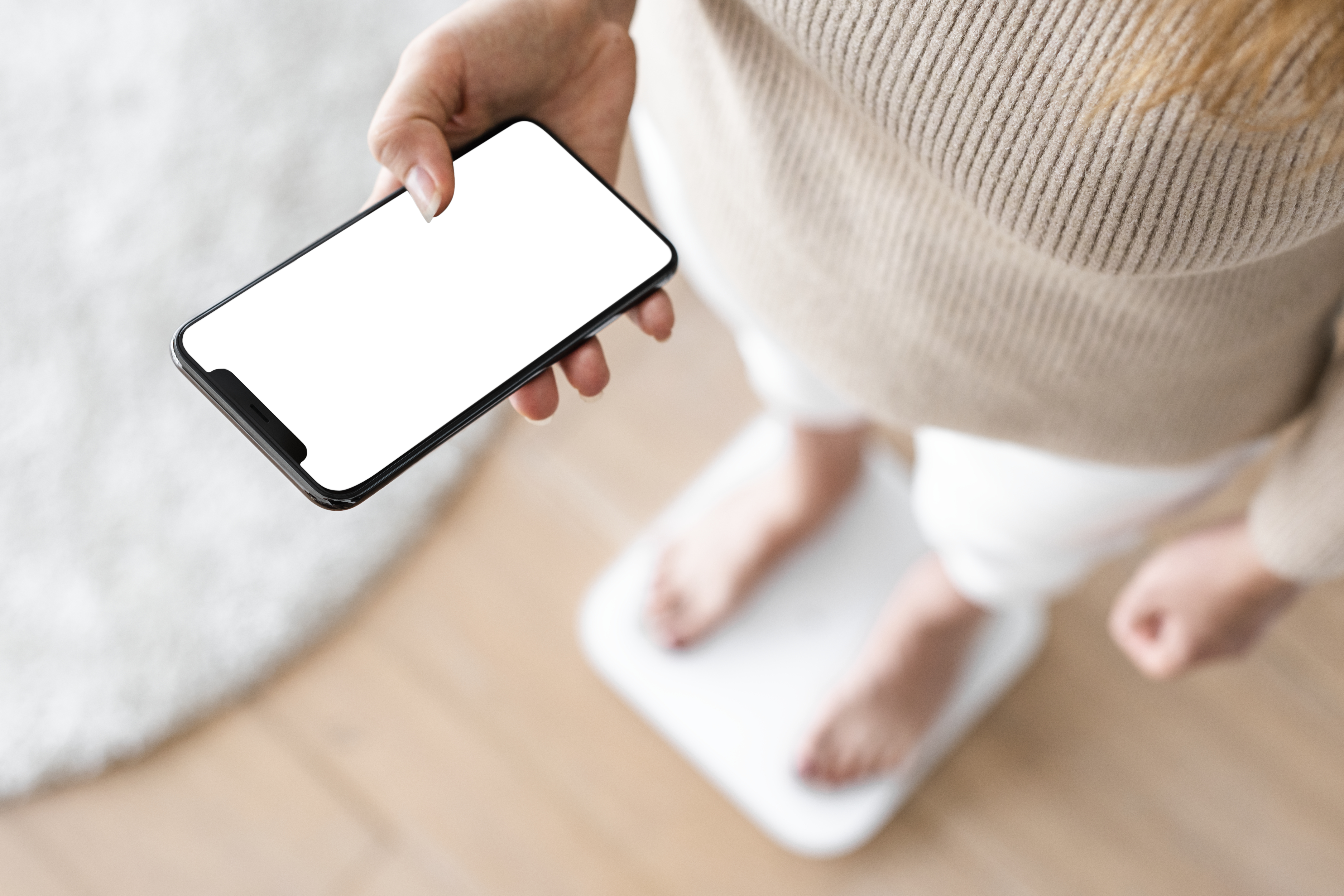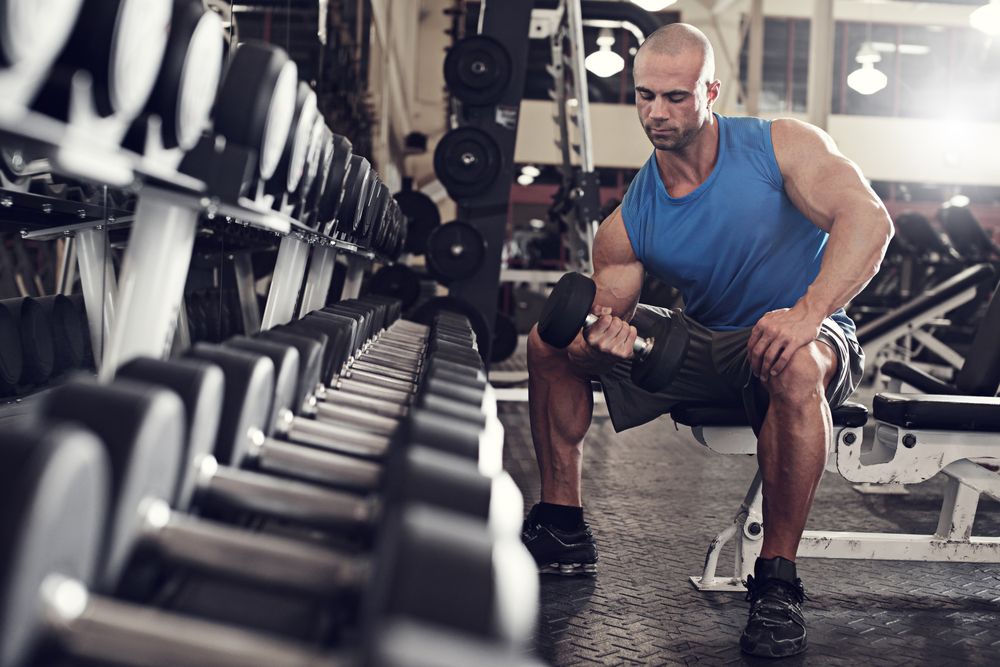Gym owners have a challenge on their hands: how to measure the success of their weight loss programs and determine whether they are effective. The compelling idea is to use a modern approach that will give a more precise measurement of body composition rather than just weight loss or gain alone.
A traditional form of measurement for this purpose has been using weight scales, but weight scales have limitations. While these two methods can deliver valuable information about the progress of a fitness program, studies show that they come with different sets of advantages and disadvantages.
Keep reading to learn which one is right for your clients.
The Use of Weight Scales
The popularity of weight scales to measure body weight has been on a steady decline. As being overweight is now being recognized as having health risks, tools that can help accurately monitor body fat composition have become widely embraced by fitness professionals, personal trainers, and their clients.
The downside of weight scales is that they just give information on how much a person weighs. They do not provide data on body fat percentage. Thus, while weight scales can inform an individual whether they are losing or gaining weight, they cannot be used to monitor the effectiveness of fat loss programs.
In addition, traditional weight scales do not provide a measurement for fat distribution.
While weight scales are suitable for monitoring the amount of weight lost, they give no information on the types and amounts of fat that were actually reduced.

Benefits of 3D Body Scanning
For these reasons, more fitness professionals and health clubs across the world have been using 3D body scanning technology to monitor their client's progress.
3D body scanning is a scientifically proven method that helps measure body composition, including weight, lean muscle mass, and fat. This method can also help monitor changes in body fat composition over time.
This form of body composition measuring is considered the gold standard in the fitness community. It is also considered to be the most accurate form of measuring, with a margin of error of less than 2%.
A 3D body scanner works by taking horizontal, cross-sectional images of a person's body. It can then determine where fat is located and how much there is. The technology can show changes in more detail than weight scales since it enhances the accuracy by about 5 times compared to traditional methods.
This method gives more information on what types of tissue are more prevalent in an individual, especially after some time has passed following the initial scan when changes in lifestyle habits become evident.
For example, if an individual had just started working out, weight scales would not be able to give any indication that muscle mass was increasing or the fat was being lost. 3D body scanning, on the other hand, can provide this information.
Accuracy of 3D Body Scanning
The accuracy of 3D body scanning can be attributed to the visual representation it offers. It shows not only weight loss but also the changes that are happening in various parts of the body due to the effects of fat reduction or muscle-building programs.
For example, a 3D body scan would show an increase in measurements for biceps, chest size, and legs.
Additionally, it could measure changes in other areas, including waist circumference, because this indicates shifting fat distribution, indicating an improved health condition.
Leverage Body Measurements
In comparison to weight scales, 3D body scanning technology is a much more effective way of tracking fat loss and gaining muscle.
When taken by a professional in a gym setting, this process creates an accurate representation of one's body weight and composition.
In fact, the results from this assessment can be used as a guide when designing workout plans or personalized programs based on what the client wants to achieve with their exercise routine.

Why 3D Body Scanning Is Becoming So Popular Among Fitness Professionals
The popularity of 3D body scanning is mainly due to the following:
- It offers precise and accurate measurements, unlike weight scales.
- It allows measuring goals like waist circumference reduction, lean muscle gain, etc.
- Personalized plans can be developed based on the client's goals.
3D body scanning technology captures more than just one's weight; it provides information that will help determine the effectiveness of a fitness program and how clients progress under these programs.
Thus, this approach offers several benefits such as:
- ability to predict future obesity issues
- identification of problem areas which aids in prioritizing workouts
- understanding of lifestyle patterns for better weight management decisions
- identifying possible health risks early so steps can be taken to reduce them.
Some experts believe that 3D body scanning technology is the future of fitness assessment. It's a no-brainer why professionals prefer this method to weight scales for helping their clients reach their goals and make healthier lifestyle choices.
3D Body Scanning vs. Weight Scales: Which is Better?
No doubt, 3D body scanning technology has proven to be more accurate than weight loss scales in measuring various aspects of one's life, including fat composition and lean muscle gain.
However, if you're still not convinced that this method can provide better results, here are several points to consider about why it might be time to switch from weight scales to 3D body scanning:
-Clients receive personalized plans based on their health, lifestyle and preferences instead of following the same weight loss program as everyone else.
- The assessment is non-intrusive because it uses infrared light technology (the same light in a t.v. remote control) to scan the body.
- 3D body scanners allow capturing measurements quickly and efficiently, so clients don't have to wait around long before receiving their results.
While both weight scales and 3D body scanning can provide valuable information about one's health status, this latest method of assessing fitness progress offers more benefits than just reading numbers on a scale which makes it very useful in helping professionals design programs that are efficient for their clients who are serious about losing weight and gaining muscle mass.
Tips for Using a 3D Body Scanner
Here are some tips to consider when using 3D body scanners for measuring your clients' progress:
- Make sure you explain the process clearly beforehand, so clients know what to expect.
- Allow time for them to change into workout clothing they will be wearing during their assessment.
- Ensure that all of their clothes are form-fitting since this makes it easier to analyze the accurate results.
- Explain what each measurement means and how it can help reach their weight loss goals more efficiently.
Remember, 3D body scanners are only helpful if they're used correctly and in the right direction.

Tips for Communicating 3D Body Scanning Results With Your Clients
There are many benefits to communicating 3D body scanning results with your clients. For instance, you can encourage them to reach their goals more efficiently by showing them the following:
- Areas in which they need to work harder through weight training or cardio exercises to improve their overall fitness levels.
- How much progress they have made since starting their program.
- How well you know them and how results might be different if they were working with someone else who was not as invested in their health.
Before giving out results, explain that these numbers are only estimates based on the technology used during their assessment since no two bodies are alike. When offering constructive criticism, use wording like saying "these measurements indicate that..." rather than "you need to do this or that."
Going Beyond a Single Number
In the end, 3D body scanners are a great way for fitness professionals to help their clients make better decisions in reaching their weight loss and muscle gain goals. With the right direction and education in using these machines, you can expect them to bring more positive outcomes in your sessions together.
To get a more reliable body composition measurement, people must turn to 3D body scanning technology, which goes beyond checking weight loss progress.
3D body scanning is seen as an upgrade from weight scale measurements because it is more precise in assessing changes in fitness levels over time. While both tools offer accountability and progress reports, which motivate people to continue working toward their goals, fitness professionals everywhere are already taking notice of how 3D body scanner technology can help their clients improve physical appearance and overall wellness.
At its core, 3D body scanning technology is an efficient tool that should be incorporated into your gym's fitness assessment process because it not only helps monitor changes in physique but also assesses specific areas of concern clients may have.






